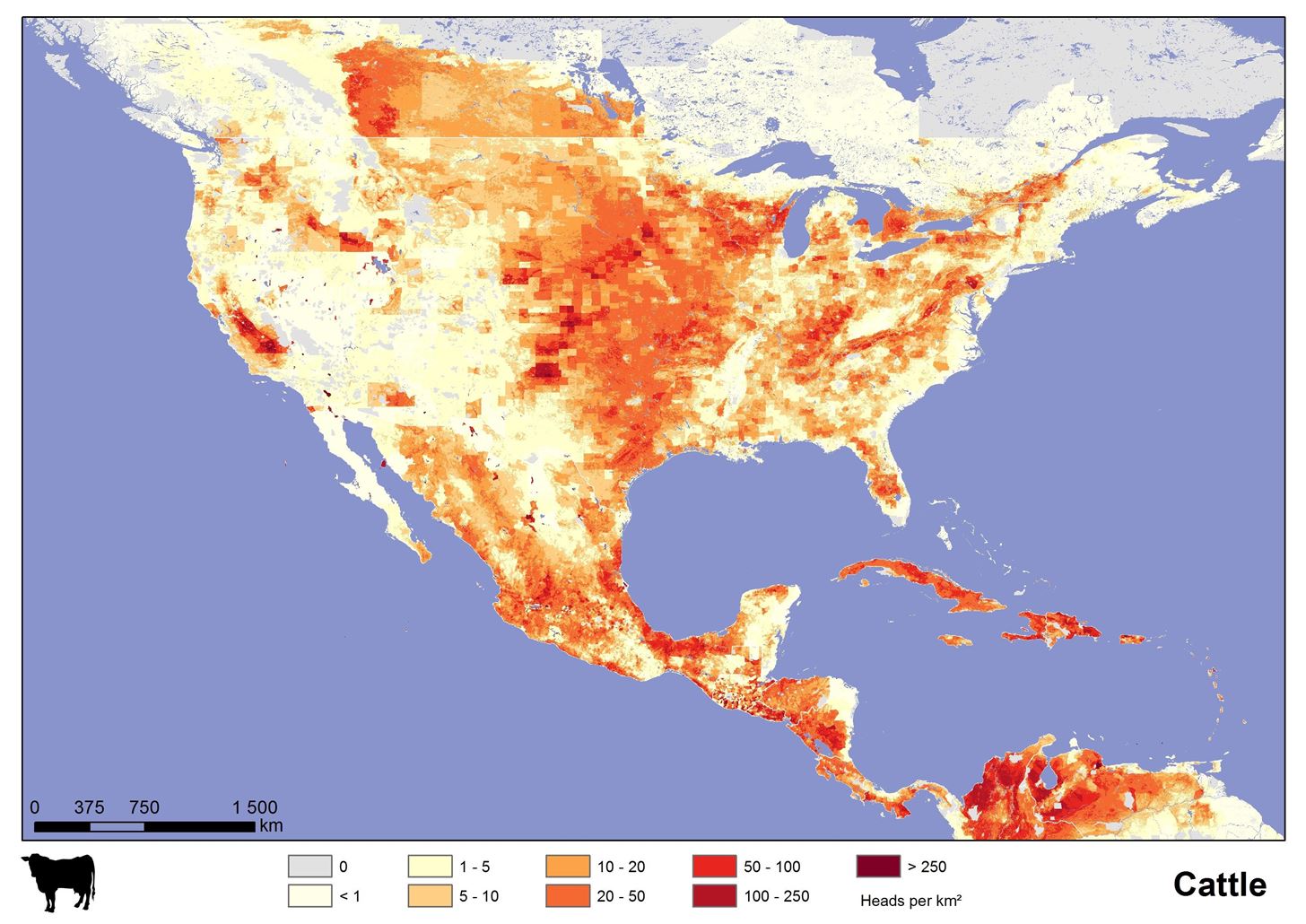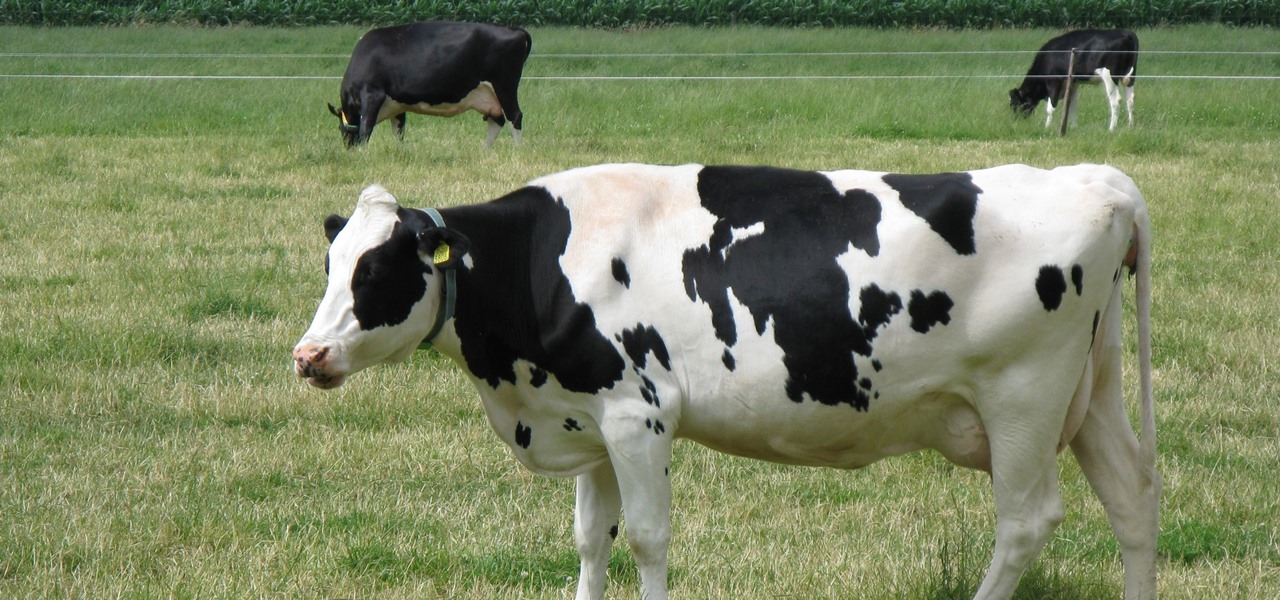When it comes to global warming, most of us think of carbon dioxide emissions. While carbon dioxide is the most important greenhouse gas, carbon dioxide emissions have stayed constant for the last three years. On the other hand, methane, the second most important gas, has been steadily rising since 2007.
The rapid rise of methane in the atmosphere is a concern that needs urgent attention, according to authors of a study published in Environmental Research Letters. Their analysis suggests that agricultural sources, with contributions from fossil fuel use and possibly wetlands, are responsible for the recent rapid rise in global methane.
Methane is the main component of natural gas, but it also is produced or emitted from many biological processes, including the flooding of rice paddies where bacteria in the soil produce methane through decomposition of organic materials.
Another big biological process is enteric fermentation, which takes place in the digestive systems of ruminant animals like cattle, where microbes breaks down food into soluble products that can be utilized by the animal. Methane produced during this process is passed out as gas through the intestinal system—think cow farts and belches.
Enteric Fermentation, aka Why Cows Fart
Ruminants have four stomach compartments where food is digested—the reticulum, rumen, omasum, and abomasum—and the rumen (a large, hollow muscular organ) is where enteric fermentation occurs.
A cow's rumen can hold 40 to 60 gallons of food and contains an estimated 150 billion microbes per teaspoon of contents. These enteric bacteria ferment the stomach contents and produce a mixture of gases in the process, made up of about 65% carbon dioxide and 27% methane.
To relieve bloating and discomfort from the gases, cows and cattle burp and fart—with the majority of the gases passing out as belches. Diets high in cellulose, like corn, soy-based feed, and some grasses, produce more methane, while diets high in grain produce less methane.
Dairy cows emit more methane per cow than beef cattle, which outnumber dairy cows in the US by about 10 to one. And more methane per unit of milk is produced by dairy cows in Asia, Africa, and Latin America than in North America, probably due to dietary differences.
But they all produce methane and they produce a lot of it.
The Effects of Billions of Cows on Methane Emissions
Animals produce about 80 Tg (a Tg is a million tons) methane per year and 75%—or 60 Tg—of that comes from enteric fermentation in cattle and dairy cows. The rest comes from water buffalo, sheep, goats, pigs, camels, and horses.
The amount of methane a cow produces varies depending on whether the animal is a milk cow or a meat cow and the content of their diet, as mentioned earlier. There are about 1.4 billion cows in the world, and each dairy cow produces roughly 110 kg or 242 pounds of methane annually, but a beef cow produces only half of that.

The study in Environmental Research Letters reported that evidence points to agricultural sources and fossil fuels as the main contributors to increases in methane emissions.
Annual agricultural methane emissions increased 3–5 Tg between 2006 and 2012, and originated mostly from Africa and Asia. Fossil-related methane emissions have increased 3–4 Tg annually since 2007. Global oil consumption continues to rise and increased 1.9% from 2014 to 2015 alone.
Methane emissions from natural gas production have decreased from 8% of the total amount of natural gas produced to 2% over the last 30 years, but the total production in the US alone has increased about 50% in the last 10 years, for a net gain in methane emissions.
But it is not just the emissions that raise concern—the big problem is the rising concentrations of methane in the atmosphere.
The Problem with Methane
The average methane concentration in the atmosphere in 2015 was about 1,834 parts per billion, while there was 400 parts per million carbon dioxide—about 218 times as much as methane. However, the capacity of methane to produce global warming is about 28 times as powerful as carbon dioxide.
That's why the sharp rise in global methane concentrations in the atmosphere is particularly troubling. From 2000 to 2006, methane concentrations in the atmosphere were rising, on average, to just under 0.5 parts per billion per year. Then they started to rise an average of 15-fold a year—about 6.9 parts per billion—from 2007 to 2015, with larger increases in 2014 (12.5 parts per billion) and 2015 (9.9 parts per billion).

Methane gas in the atmosphere causes much stronger short-term global warming than carbon dioxide, but the effects fade more quickly than carbon dioxide's.
Carbon dioxide in the atmosphere dissolves into the oceans over 20–200 years and the rest is removed by chemical weathering and rock formation. This process can take several hundreds of thousands of years.
Methane, by contrast, is mostly removed from the atmosphere by chemical reactions and only persists in the for about 12 years. That relatively short time could be used to our advantage to affect a change in the course of rapidly rising atmospheric methane concentrations.
Researchers have found several ways farmers, ranchers, and consumers can help get these rising methane levels under control.
This Is Fixable
Because of methane's high global warming potential and short lifetime in the atmosphere compared to CO2, its mitigation offers the possibility to slow climate change efficiently in a shorter time horizon. In addition to climate benefits, reducing methane emissions could help improve human health and crop production through simultaneous reductions in ozone production and provide business and employment opportunities.
One way to decrease methane emissions from cows and cattle is for consumers to eat less meat and dairy. The US Department of Agriculture estimates that the average American eats about 50 pounds of red meat each year, down from over 80 pounds a year in the mid-1970s. Americans are eating less meat and dairy, but global consumption is going up.
Global demand for meat and milk increases every year, and milk production is projected to rise from 580 to 1,043 million tons by 2050. Trying to decrease worldwide meat and dairy consumption may be a tough goal to reach, but there are other ways that may be more controllable and create more predictable effects.
Researchers from New Zealand working at the government-owned AgResearch institute are working to develop a vaccine for cattle that will reduce the number of methane-producing bacteria in their gut.
Once perfected and in use, they plan to label the meat and daily products "Clean Cow" so that, much in the same way organic produce can now be identified, consumers would readily be able to tell which products were produced from cows releasing less methane into the environment. Consumer demand for "Clean Cow" products could then decrease the demand for products from higher methane-producing animals.
Feeding oils— like canola, sunflower, and flaxseed—higher grain diets, feeding legumes rather than grasses, and using corn silage or small grain silage rather than grass silage or grass hay could each have an immediate effect to reduce methane emissions by five to 20 percent.
Improvement in venting methane from coal mines and developing farm bio-digesters that convert methane produced from manure into electricity are mitigations that could also be considered.
Many different approaches may change the course of methane's affect on global warming, but, as the authors urged in the Environmental Research Letters study, we need to recognize this growing problem now and act on it before it gets worse.
Just updated your iPhone? You'll find new emoji, enhanced security, podcast transcripts, Apple Cash virtual numbers, and other useful features. There are even new additions hidden within Safari. Find out what's new and changed on your iPhone with the iOS 17.4 update.

























Be the First to Comment
Share Your Thoughts